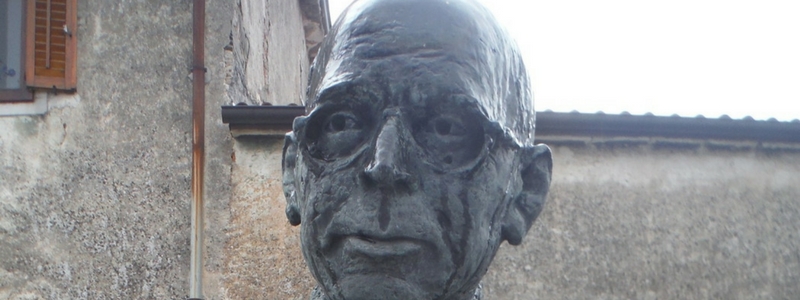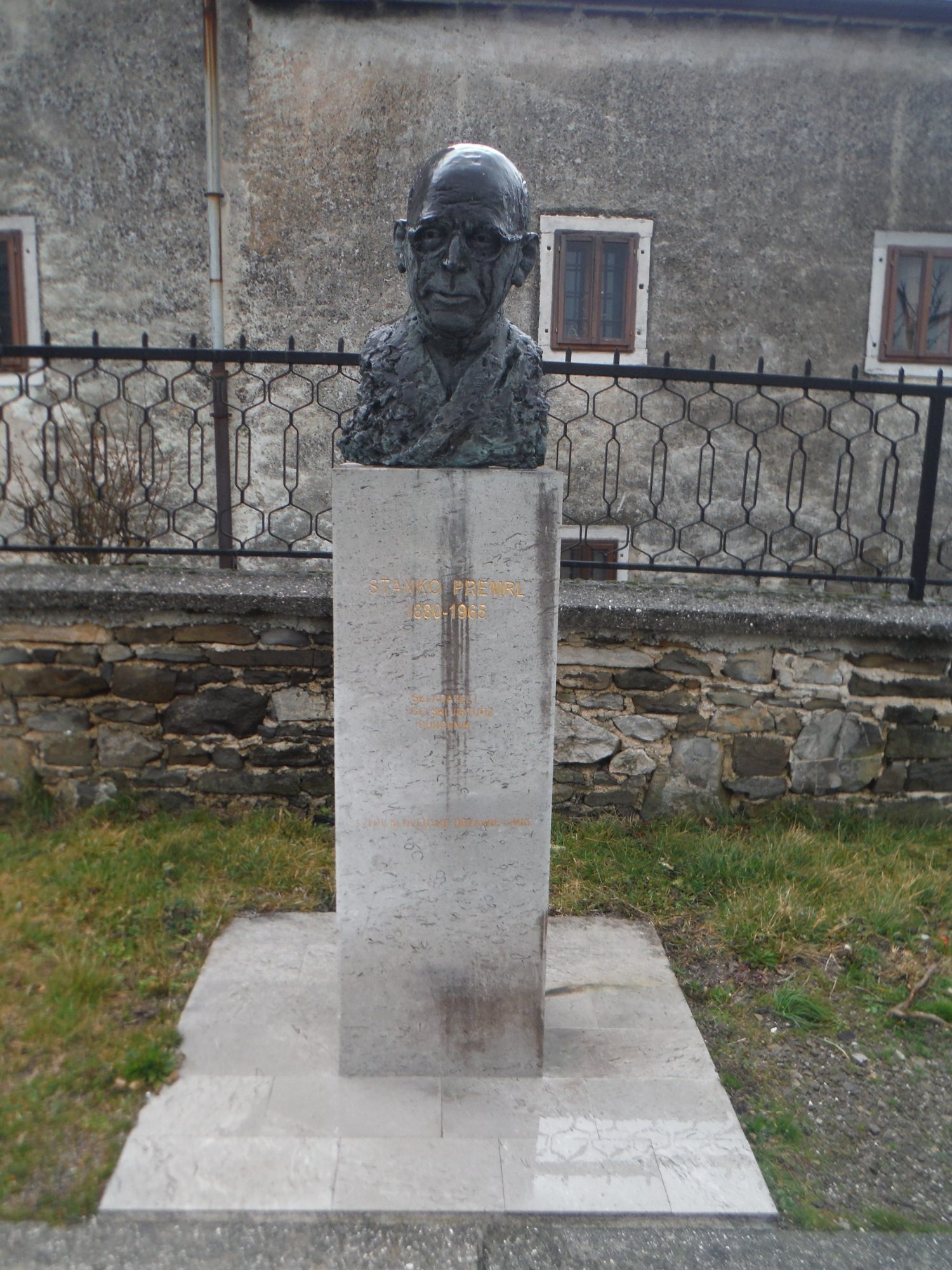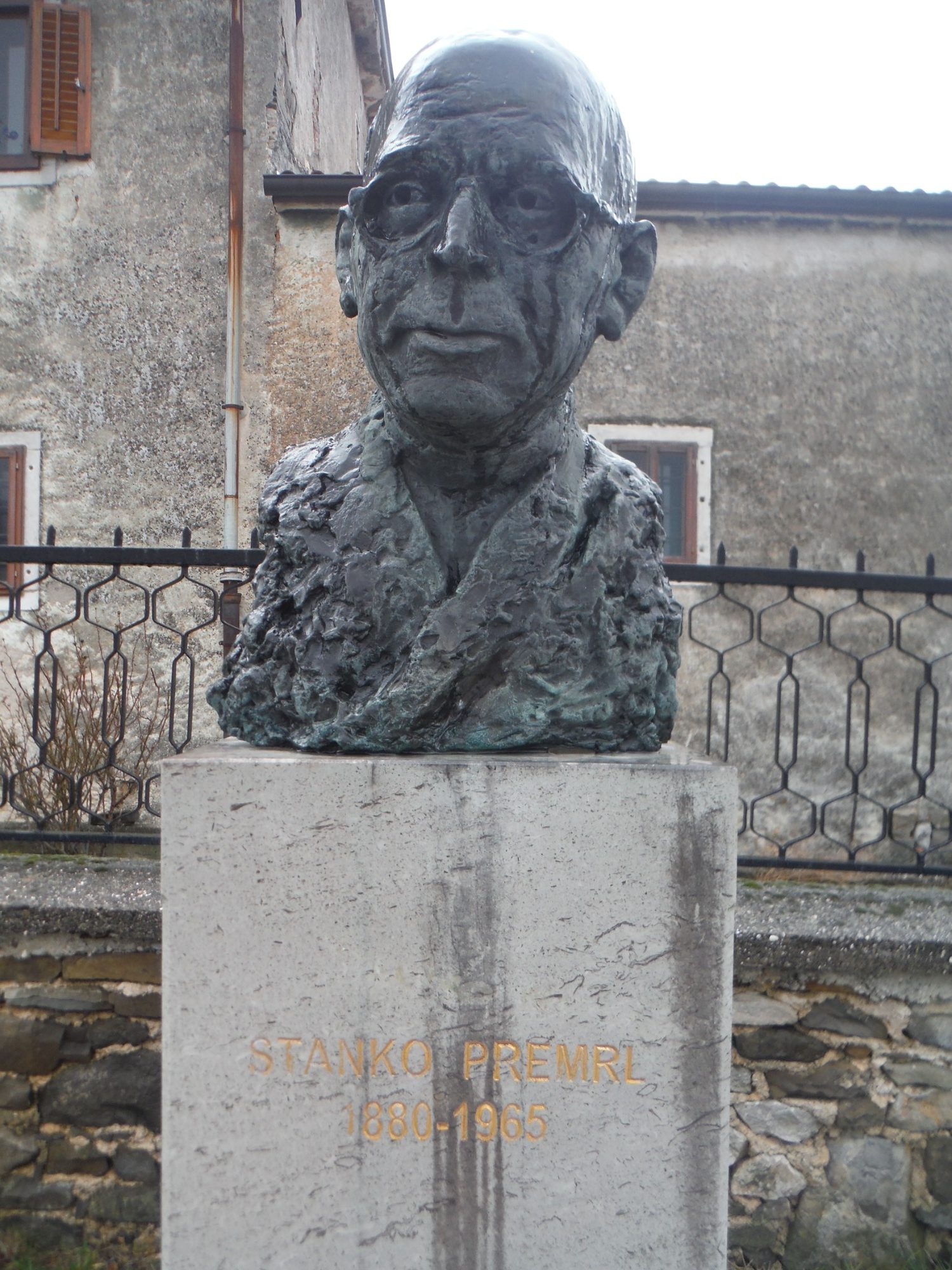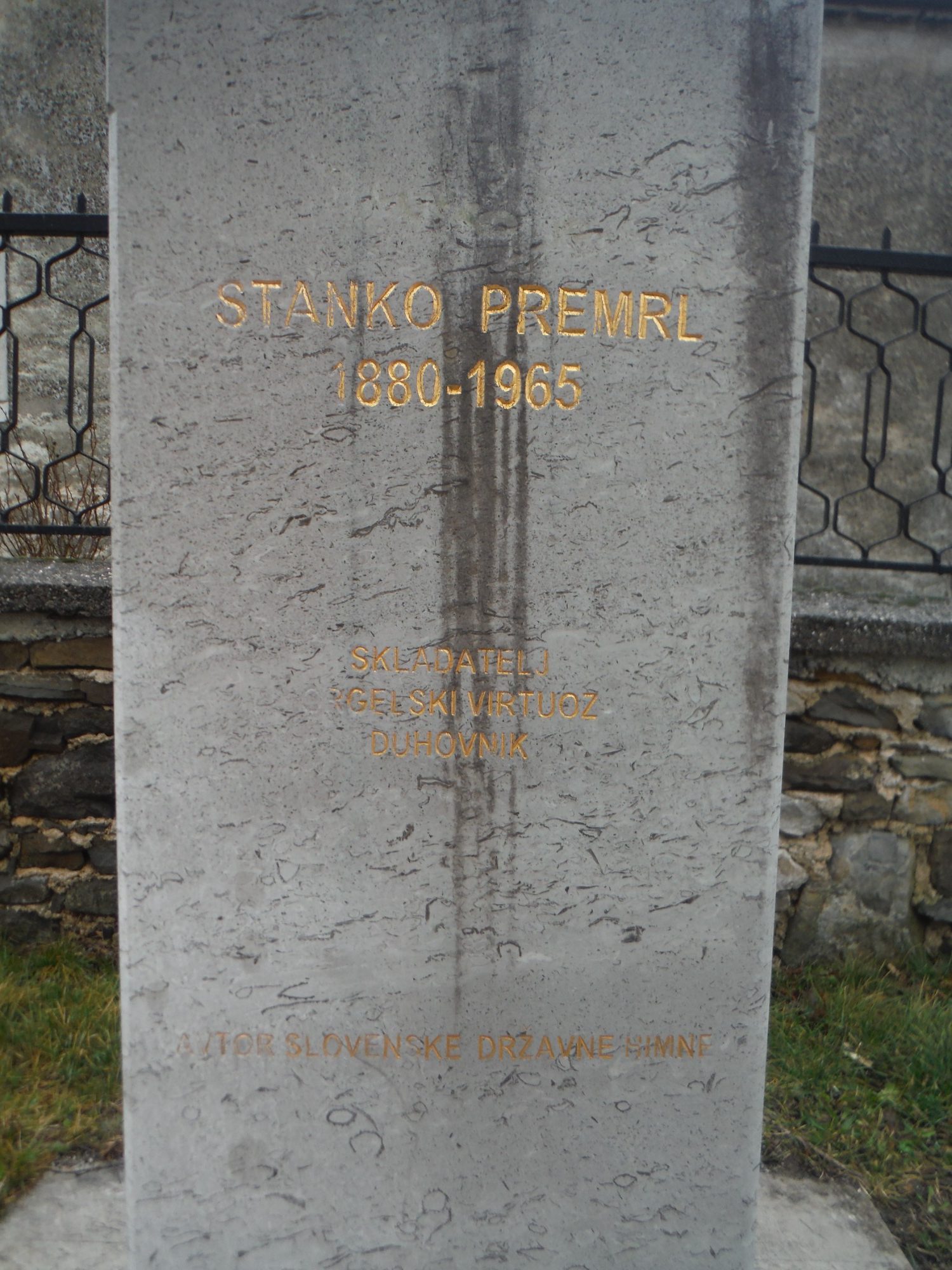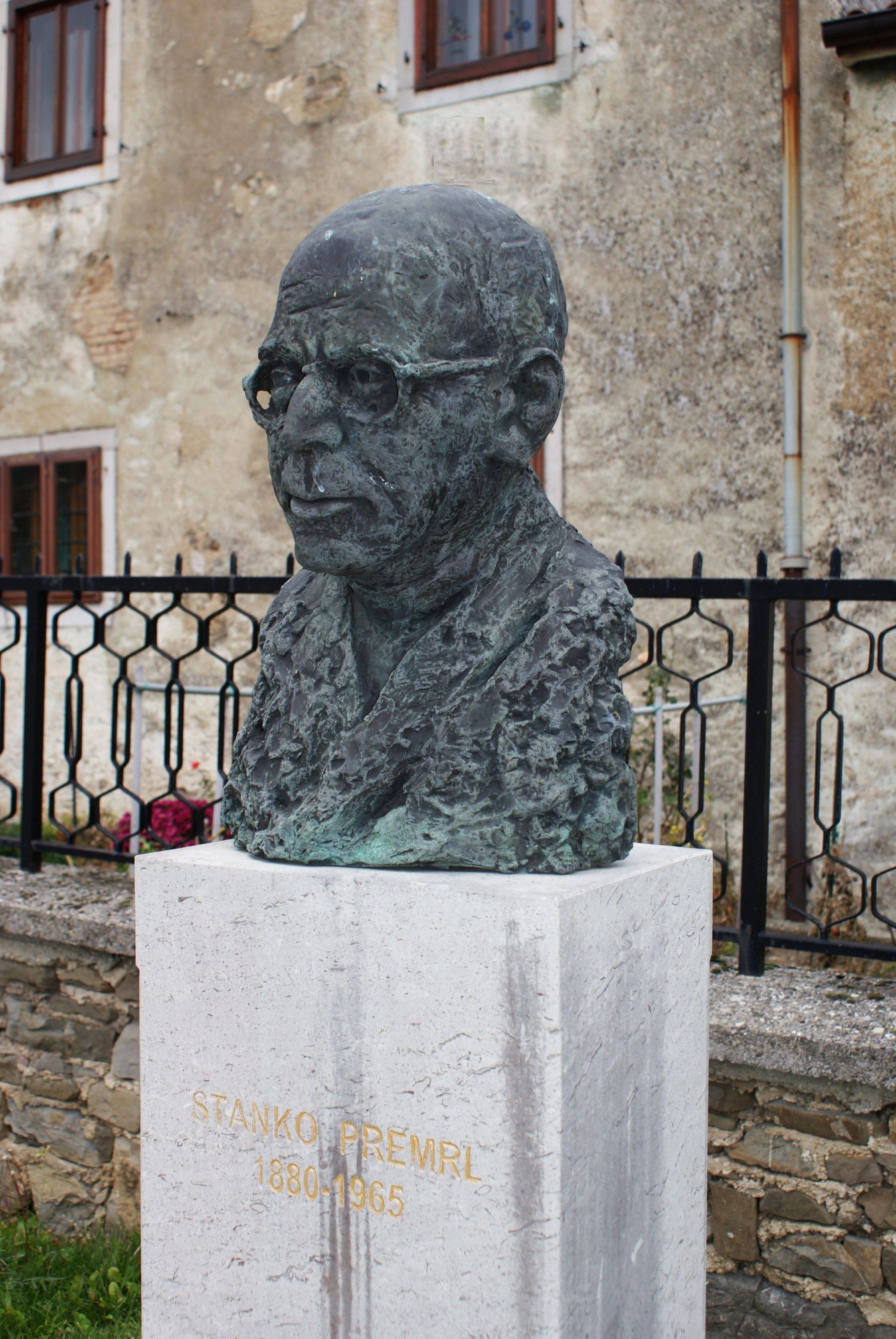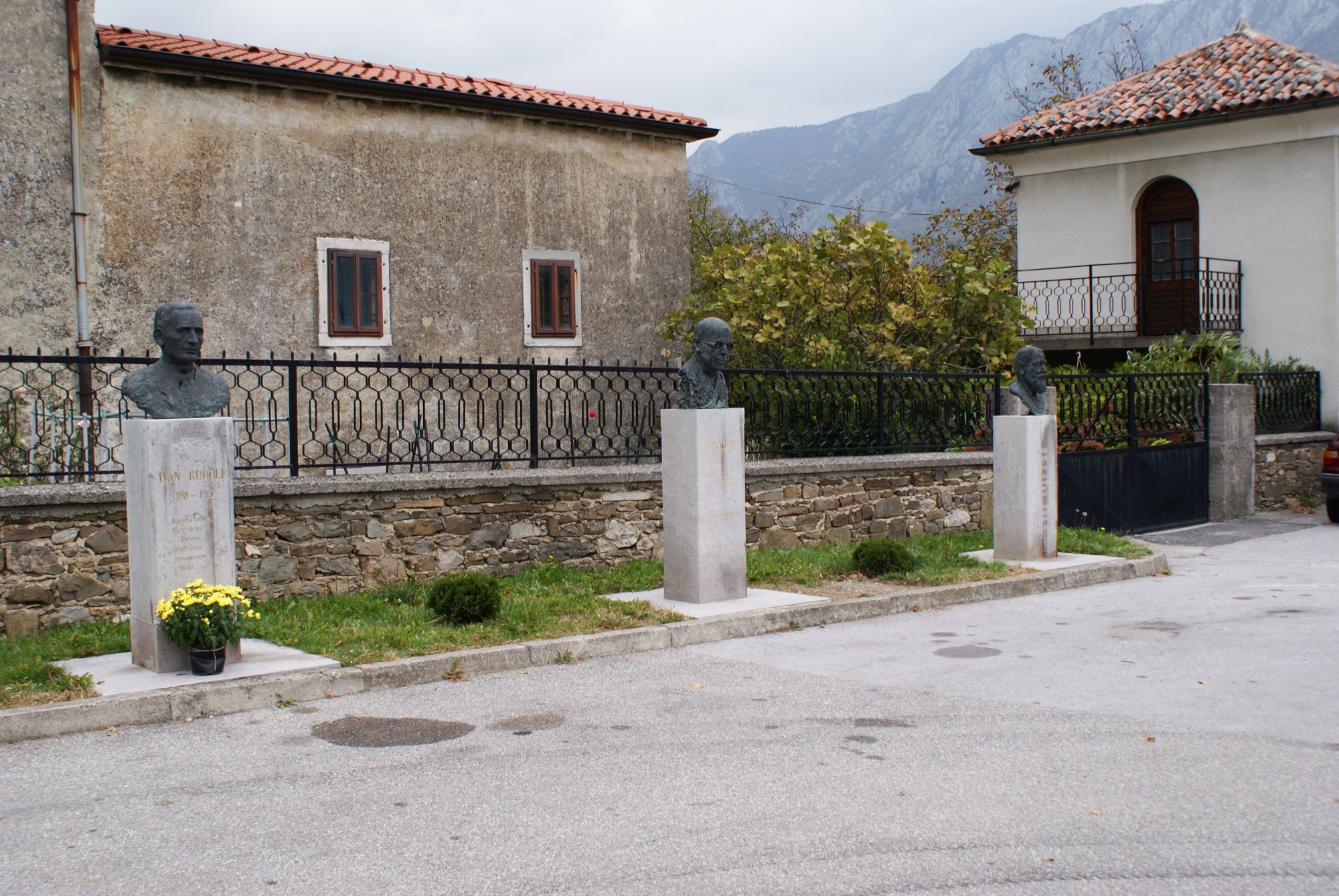In 2005, on the initiative of the Stanko Premrl Commemorative Committee to mark the 40th anniversary of the composer’s death, the 125th anniversary of his birth and the 100th anniversary of the musical setting of the Slovenian national anthem, Zdravljica, a bust of Stanko Premrl made by Zmago Posega was erected on the side of the square at Podnanos, next to house no. 54.
Stanko Premrl
Musician, organist, music teacher, publicist and priest Stanko Premrl (1880–1965) is recognised as one of the most prolific Slovenian composers. Particularly productive in the genre of church music, Premrl markedly influenced mainstream composing tendencies, especially by advocating a wider tonal range. The endeavours of this central figure of twentieth-century Slovenian church music led to a major turning point in the advancement of composition and lent the impetus to Slovenian church music needed to achieve equality in value with European musical sophistication.
While attending grammar school, Premrl took lessons in piano and music theory at the Music School of the Glasbena matica Music Society Ljubljana for four years. He graduated in composition, counterpoint, organ and vocal studies, apart from the piano, from the conservatoire in Vienna. During his Viennese studies, Premrl composed the music for France Prešeren’s poem, Zdravljica (A Toast), which had presented a considerable challenge for a number of composers. In 1905, while holidaying at home, Premrl thought of the melody and composition, which he completed in Vienna and published soon thereafter in the Novi akordi (New Chords) magazine.
Having finished his studies with distinction and a medal in 1908, Premrl returned home, and in autumn of that same year passed the state examination in organ and singing. He was professor of organ and singing at the Organ School in Ljubljana, and later on also taught harmony, counterpoint and piano. He succeeded Anton Foerster, the founder of the Caecilian Society’s Organ School, as the school’s principal, a position he held for 32 years.
Premrl also taught music at the Faculty of Theology, and several subjects at the Ljubljana Conservatory of Music between 1919 and 1939, when he joined the faculty of the Academy of Music as full professor, retiring in 1945. From 1909, he served as organist and chaplain at Ljubljana Cathedral and, in addition, edited the musical supplements to Cerkveni glasbenik (Church Musician), the first Slovenian music journal, published since 1878 by the Caecilian Society. The publication included a number of articles by Premrl, writings that, surprisingly, addressed practical issues rather than discussing the stylistic features of church music. Thus, Premrl’s aesthetic views can be discerned primarily from his passing remarks and opinions casually expressed in his concert reviews and evaluations of various works by Slovenian and international composers.
With a massive output of over 2000 pieces, Premrl merits particular recognition as a composer. Although his body of work comprises both sacred and secular music, the compositions associated with liturgy are deemed especially significant. Boasting over 1000 works, the church music comprises the bulk of his oeuvre, consisting of masses, songs for female, male and mixed choirs, lieder, the orchestral piece Božična suita (Christmas Suite) and, predominantly, organ compositions. His music reveals a manifest departure from rigorous Caecilian dictates, conventions to which he adhered primarily in his early creative stage and that assigned precedence to the intelligibility of the liturgical text over the artistic dimension of a musical piece.
Over a period of two decades Premrl gradually changed his aesthetic opinions to eventually argue, in his writing, in favour of modernity in church music, and championed composers who held progressive views. His compositions grew to reflect an increasing use of chromatics, and more liberal treatment of dissonance. In distancing himself from the Caecilian movement, Premrl is commonly considered to be the composer whose influence led to a break with the Caecilian tradition in Slovenian music. Credited with being the originator of a new stylistic orientation in Slovenian church music by introducing advanced compositional techniques, Premrl nevertheless also remained faithful to traditional moulds.
Anja Biščak
